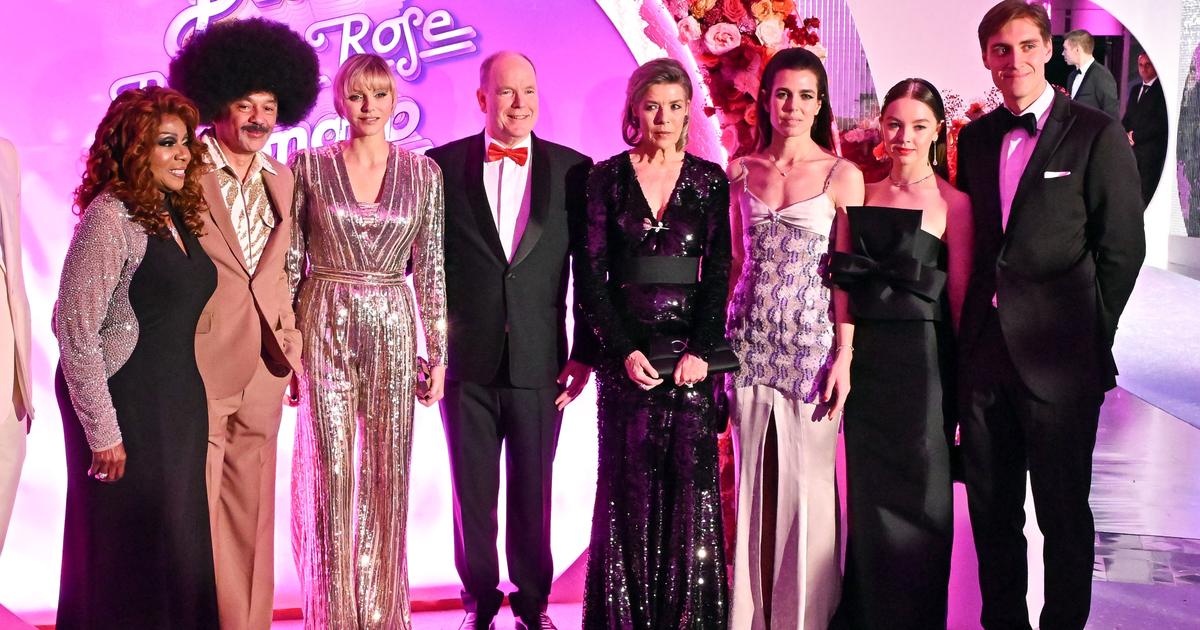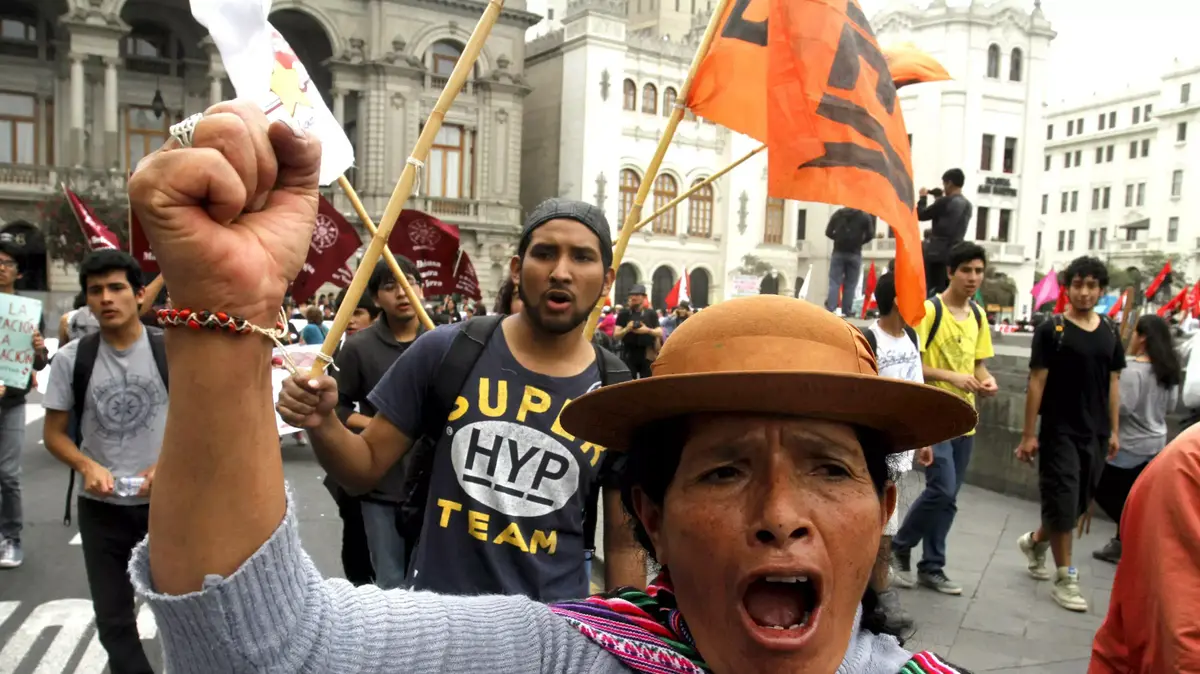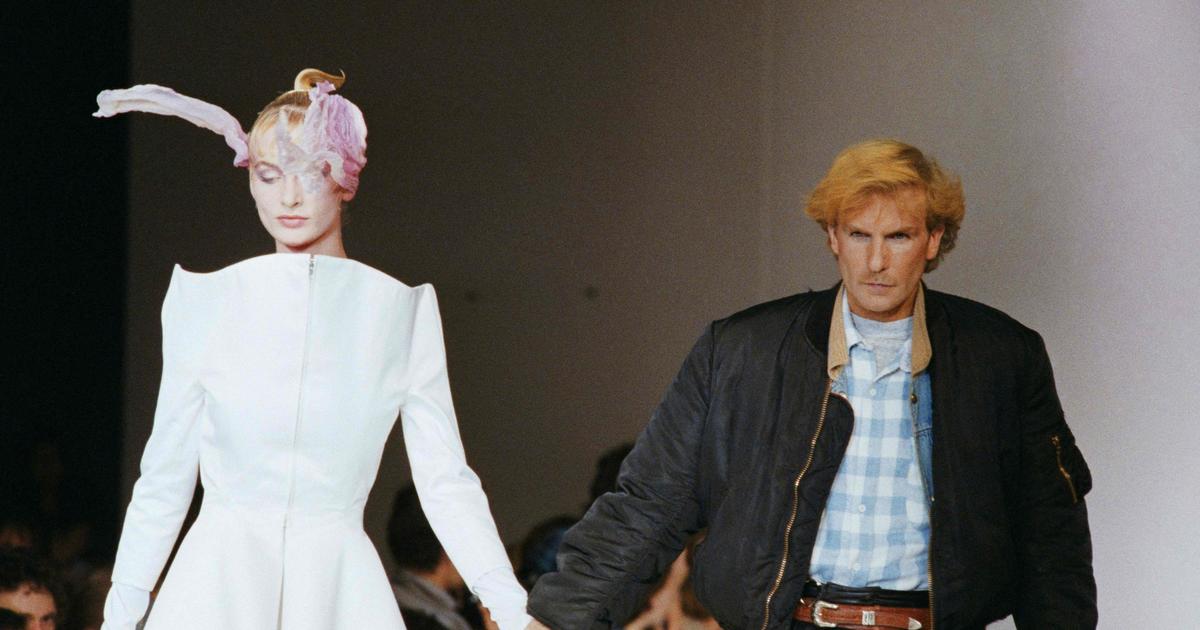One of the first memories that Sybilla Sorondo (New York, 59 years old) keeps from her life is related to fashion.
She clearly remembers the scene in which she, at the age of four, is trying on the children's dresses designed by her mother, an aristocrat and artist of Polish origin, in a workshop on Manhattan's Seventh Avenue: a little gold suit, a green one pleated, another with a large daffodil.
She, that shy and lonely girl, found in her clothes a refuge and a vehicle of expression with which she let her silence speak, although she did not fantasize about being a dressmaker.
She wanted to be an ecologist and oceanographer, and travel the world like Jacques Cousteau did aboard the
Calypso.
“My mother never talked to me about fashion.
She taught me with her way of being and with the freedom with which she educated me in every way.
I was born when she was old and she died when I was young.
She let me dress as I wanted and did not interfere with anything, ”recalls Sybilla in a conversation with
El País Semanal.
The enigmatic designer is about to turn 40 in fashion and to celebrate it she returns to her workshop.
Her return coincides with a retrospective of her career.
The exhibition, entitled
The Invisible Thread,
will open on September 27 at the Canal de Isabel II Hall in Madrid, where more than 80 of his pieces can be seen, as well as photographs of his collections taken by great collaborators such as Ouka Leele (who died in May), Juan Gatti, Javier Vallhonrat, Pepe Lamarca or Retamar.
Some of Sybilla's creations for spring-summer 2001. Juan Gatti
The invisible thread will be a review of the designer's different creative stages —from
patchwork
to sculptural dresses, passing through transformable garments—, but also of her successes and failures.
She herself admits that her staging is helping her to explain herself.
“I imagine that the thread is trying to be true to myself, even though it may generate contrasts and contradictions, ups and downs,” she says.
For Laura Cerrato, curator and creator of the exhibition, reviewing one's history is "an act of courage".
“We always find moments of happiness and moments that move us.
This has had something of a roller coaster”, adds the curator.
In this attempt to explain herself, Sybilla goes back to the starting point, the origin of her creative impulse: the death of her mother.
She was only 14 years old.
“His loss of her marked me, without a doubt, but in a different way than you could imagine.
It coincided with the time when she did not have a good relationship with my father.
So I dropped out of school and left home,” she says.
At the age of 17, she moved to Paris and, without formal studies in design or tailoring, she began working in the Yves Saint Laurent atelier.
"He was a shadow and I was the last monkey in the attics," she clarifies.
But she became an apprentice of Anne-Marie Muñoz, the master's right hand.
"There I understood what sewing was and a way of working that has accompanied me."
One of Sybilla's most iconic creations: the Spain dress, from 1996. The front neckline is an allegory of the Spanish character: the bull's horns, a Latin cross and the sun.Juan Gatti
Fashion not only helped her become independent and reaffirm herself as a woman, but also to "connect" with the figure of her missing mother.
After spending a year in the Saint Laurent workshop, she left Paris to join the Madrid Movida.
"It would have been more logical to stay in France and become an assistant to a designer's assistant, but I went back to the city where I grew up and was lucky enough to be in a good place at a good time."
A friend who had a store on Calle del Almirante gave him a push, contacts and help.
Sybilla placed an advertisement in the newspaper, which was answered by a group of seamstresses and an exceptional modeller, Carmen de Andrés, with whom she began to shape her drawings.
At the age of 19, she used the basement of her father's house, Jorge Sorondo, as a workshop and went to the fashionable bars of the capital selling her shirts.
Sybilla campaign for spring-summer 1999. Juan Gatti
“I was one of his first clients.
I remember his first parade, in 1983, because I organized it.
It was a real move within the Movida Madrid.
I myself did the makeup for the models while I was eight months pregnant with my daughter Brianda”, says María Eugenia Fernández de Castro, who, together with her then-husband, Jacobo Fitz-James Stuart, hosted the designer's debut in the pavilion of the Siruela publishing house.
Invited journalists, architects and artists were impressed by the young and revolutionary collection.
“She was always different.
She perceived the hand and vision of an artist in everything she did, ”says Fernández de Castro.
Juan Gatti, Sybilla's collaborator for more than three decades, also remembers that stage.
“I discovered his first garments in 1983, in the pavilion of Jacobo Siruela.
Then I saw garments that Javier Vallhonrat had photographed and I loved them”, says the photographer.
Some time later, he met her in Deià (Mallorca).
“Such magnetism arose from that meeting that we couldn't separate and that's how they spent 35 years working together,” explains Gatti, who defines her friend as a great seductress: “Elegant in the way she moves, dresses and works, with a taste exquisite and quite genius”.
Sybilla, together with two of her closest collaborators: the photographer Juan Gatti (on the left) and Luis Arias, who was director of the brand from 1985 to 2003. Sybilla Archive
Sybilla's style quickly evolved and crossed borders.
"In those years, I was in Madrid and I bought one of her raincoats," recalls Valerie Steele, an American fashion historian and director of the Museum of the Fashion Institute of Technology.
“So, she brought a sense of renewal to Spanish fashion.
Her legacy is one of soft, whimsical designs,” she notes.
The details of her creations began to transform into something abstract, only appreciable in the way the garment was resolved from a structural point of view.
Her critics compared her to Balenciaga for her mastery of volumes and her high degree of attention to detail.
“In my eyes, she is the worthy heiress of Cristóbal.
I go further, she is the sovereign of simple and aristocratic Spanish fashion”, says Olivier Saillard,
She was also compared to Madeleine Vionnet —for her handling of bias technique and the freedom of the body—, with Elsa Schiaparelli —for her surreal humor— and with Madame Grès —for her modeling work on the body—, but she did not She feels identified with none of those names.
“I didn't know them when I was designing nor do I have them in my head now”, she clarifies.
“The thousands of hours I spent looking for second-hand clothes in flea markets and warehouses to transform them and make botches taught me what I know about cuts, textures and sewing techniques.
That's how I learned how much you can love your favorite clothes."
Luis Arias was director of the brand and right-hand man of the designer for almost two decades.
A mutual friend introduced them at a Radio Futura concert in 1982. “I thought she was a fascinating, shy, elegant, cosmopolitan and observant girl,” recalls Arias, who joined the firm before the first parade at Barcelona's Gaudí.
“It was an extremely exciting time.
We worked all day and sometimes at night too, but we loved it.
And we went out partying all the time.
Working with her is like getting on a roller coaster: there are constant shocks, but you have a blast”.
One of Sybilla's creations for the autumn-winter 1988-1989 collection. Javier Vallhonrat
For Arias, the brand's turning point came in 1987. “That year was his first fashion show in Milan.
From then on, everything accelerated exponentially: sales, projection in the world press, contracts… Very quickly he entered the Olympus of the great international designers of the moment, where Jean-Paul Gaultier and Romeo Gigli were”, he points out.
Sybilla began to produce and distribute her collections with the Italian industry Gibó.
Olivier Saillard remembers it.
“We received the catalog of his collection, photographed by Vallhonrat, at the Fashion Museum in Paris.
I was immediately seduced by this new poetry that contrasted with the dark fashion of the Japanese.
His art for the cut and the colors conquered me”.
In the early 1990s, Sybilla became interested in Japanese fashion, especially the work of Yohji Yamamoto and Rei Kawakubo.
She was impressed by how they broke with the established, creating new ways and forms of investigating and playing.
“They brought an extreme creativity to fashion that gave wings to those of us who were starting out to express ourselves in our own way,” she says.
Issey Miyake invited her to Kyoto to give a talk and there she did some fashion shows.
This is how she became associated with the Japanese giant Itokin, which began to produce and distribute her designs in the Asian country, the most exquisite, creative and competitive market in the world.
Her name seemed to be everywhere: a new store in Paris, a big contract in Japan, a perfume.
Demi Moore wore a Spanish dress in a scene from
Ghost
(1990), the blockbuster of the time.
Sybilla's unabashed sensuality became a worldwide phenomenon.
Luis Arias defines it as "a soft, sensual and accessible femininity that did not give up stimulating touches of extravagance".
Juan Gatti speaks of "a mixture of scientific rigor and a sense of humor".
"Her clothes always had a reference: a dress to fall in love with, a dress to do business or a dress to eat watermelon," explains the photographer.
“Simple and complicated, humorous and elegant, new and classic, fluid and structured, practical and extravagant, sober and sensual, natural and sophisticated.
Impossible to pigeonhole!”, says curator Laura Cerrato.
The creator's dresses for the spring-summer of the year 2000.Juan Gatti
After presenting the autumn-winter 1991-1992 collection in Paris, Sorondo surprised the world with an announcement: he was going to leave the French catwalks and terminate his contracts in Europe to focus on Japanese production.
“It was at my most successful moment when I realized that I didn't want to continue there, exactly the night of the opening of the Parisian store, when the newspapers said: 'The Spanish give a lesson on how to throw a party in Paris '.
I was 27 years old and I died of vertigo.
I got sick and, in the middle of the mess, I got pregnant.
That's where I changed course."
This decision, as incomprehensible as it was audacious, fed his halo of mystery, of elusive and elusive genius.
“I have always thought that Sybilla resembles a Modigliani figure.
Her distance, her discretion and her nonchalance make her a character in a novel.
She is as much an author as she is a muse,” Saillard reflects.
“The enigma is part of her seduction.
I don't think she has benefited or harmed him.
She has served to create a fashion icon, a kind of fairy or ghost”, says Gatti.
For Valerie Steele, that trait is attractive, "but it's not competitive."
In the 2000s, Sorondo agreed to let capitalist partners enter his company.
"I left just before, when differences began to emerge regarding management," says Luis Arias.
“From my point of view, that and the departure of some historical collaborators generated a change in the project with which she stopped feeling identified.
Everything was distorted."
So, Sybilla took a step back and took refuge in Mallorca.
It took her 10 years to regain control of the company from him.
“Maybe I regret taking on more than I was capable of and being overconfident in some cases, but regret isn't the word,” she says.
In the second decade of the 21st century, she returned more colorful than ever with small collections in pop-ups and a new store in Madrid.
Luis Arias emphasizes that this is the designer's main trait: her obstinacy.
"Never give up.
She is an introvert, but she has an overwhelming personality.”
Coat designed by Sybilla for the autumn-winter 1986-1987 collection. Javier Vallonrat
Sybilla talks a lot about “ups and downs”.
In 2018, after receiving the Gold Medal for Merit in Fine Arts and the Spanish National Fashion Award, she had to close her store again.
"You have to know how to adapt to the world that is coming and I didn't do it," she says, accepting her part of the blame.
"My fashion ship sank and that forced me to get on the raft of my passions, follow my other interests to make a living."
In recent years, she has dedicated herself to ecological, agricultural and artisan projects, and continues to have three brands in Japan and more than 40 points of sale in that country.
When it seems that he has withdrawn, he always comes back.
“I reopen a workshop to make custom clothes and brides in Madrid.
I'm very excited,” she announces.
She is full of ideas.
She wants to create household items and underwear.
She also has architectural projects in hand with her partner.
“I am starting over.
Though I doubt she would be able to find equipment and craftsmen like she had.
They seem to be an endangered species.
The world is different,” she laments.
The fashion industry is also different.
New designers have to deal with the demands of marketing and creating multiple collections a year while building a public profile, which means lavishing on social media and metaverses.
“You have to have talent to design a public image, an instagrammable life… Today this is also design, as it was to dress for a night out in the eighties.
I think I don't have that talent, it makes me very shy”, acknowledges Sybilla, who still feels like the shy girl who played with her mother's dresses.
In the face of so many changes, she clings to the invisible thread that unites her 40-year career: "Trying to be true to myself."
50% off
Subscribe to continue reading
read without limits
Keep reading
I'm already a subscriber














/cloudfront-eu-central-1.images.arcpublishing.com/prisa/B7F2F3HZ2JCUHDZJKAGKAXXPSU.jpg)